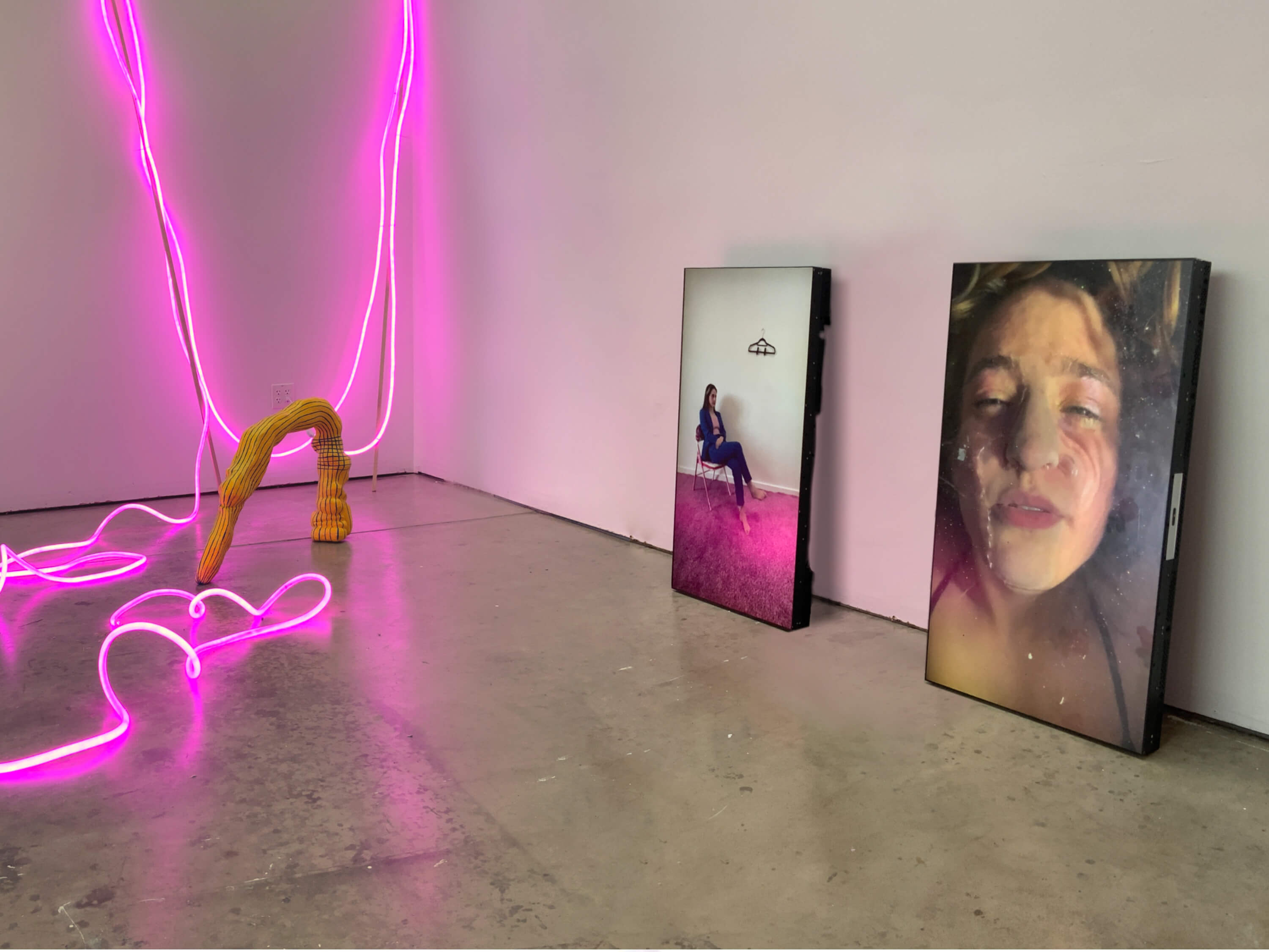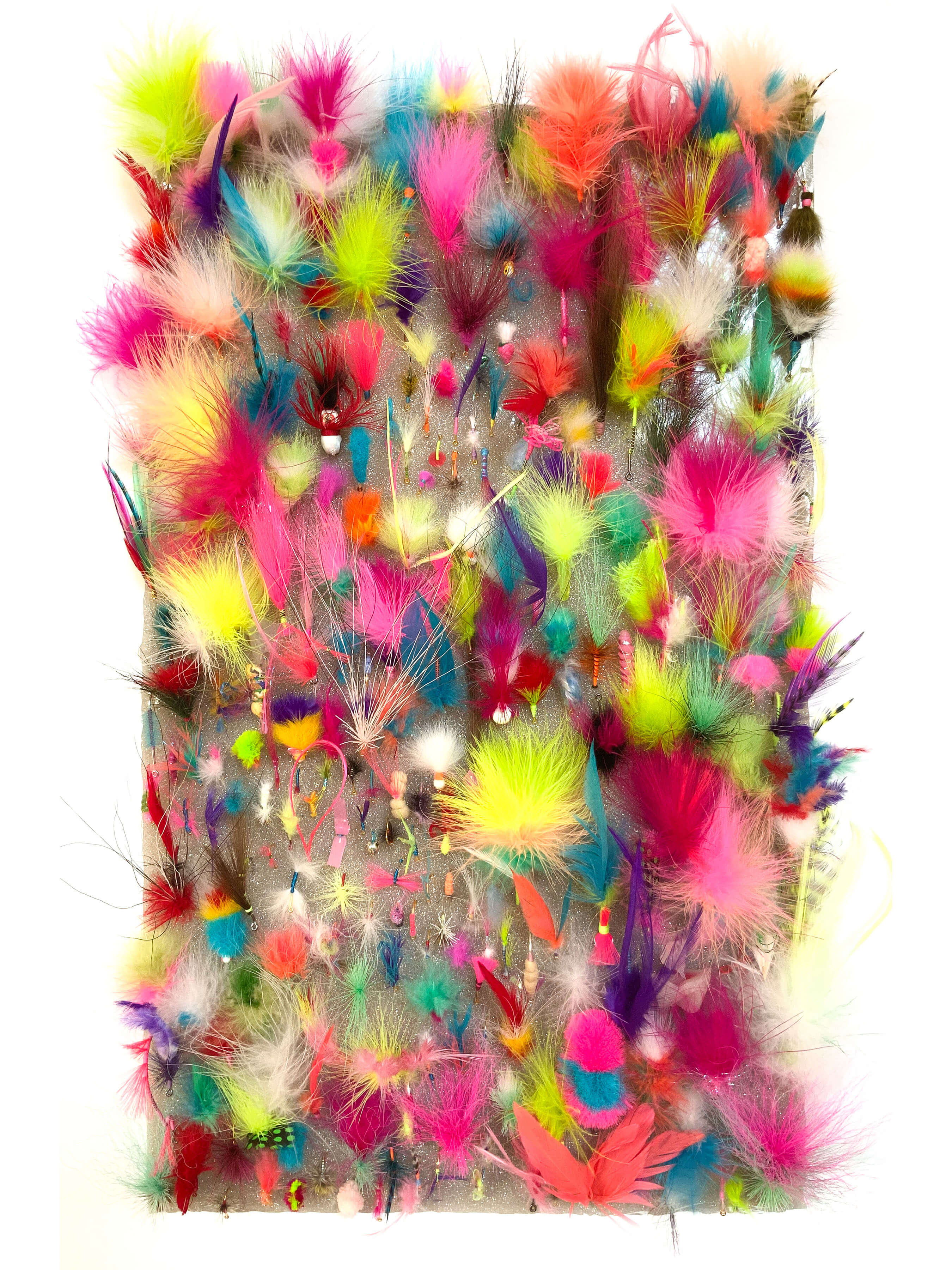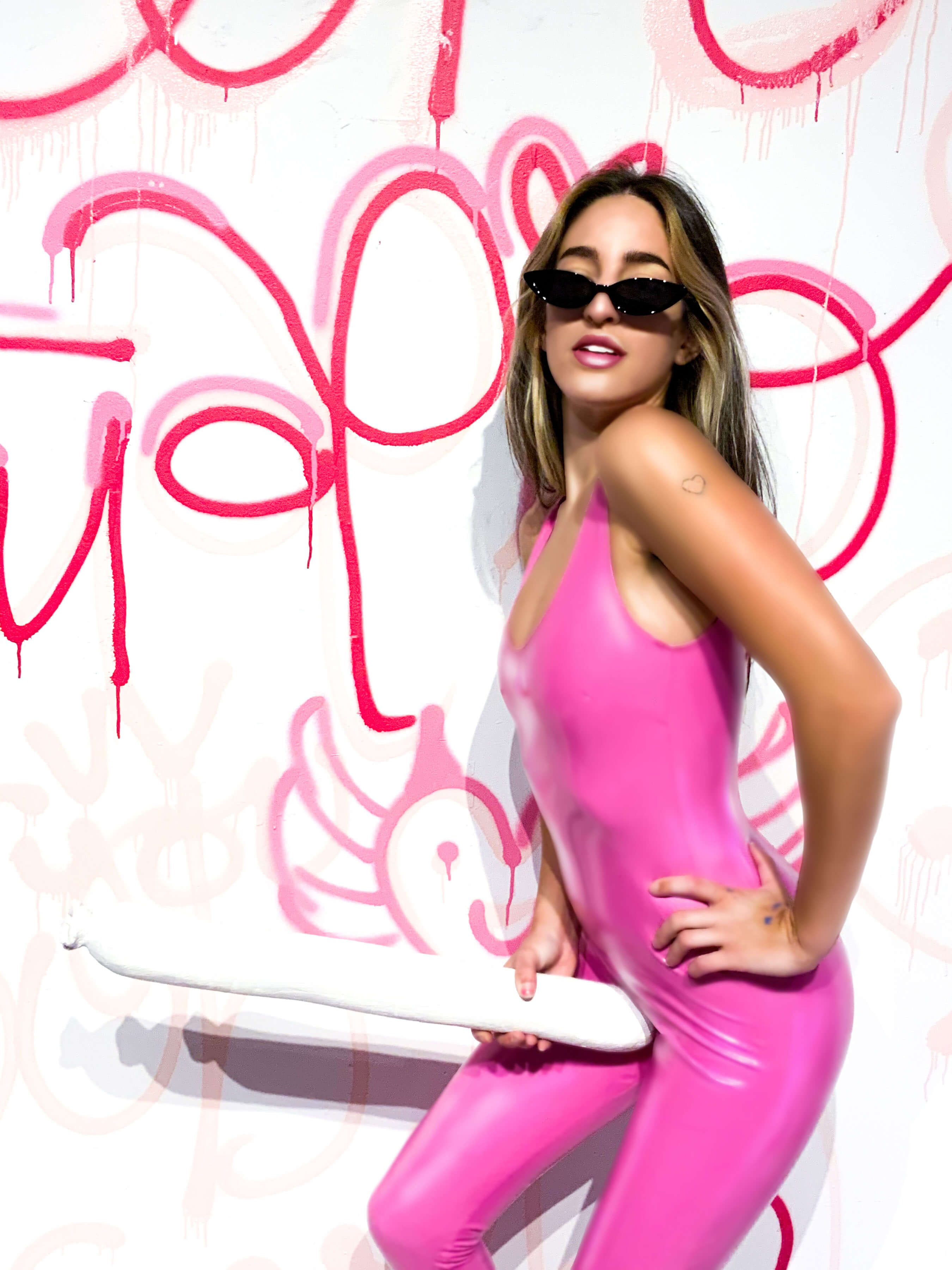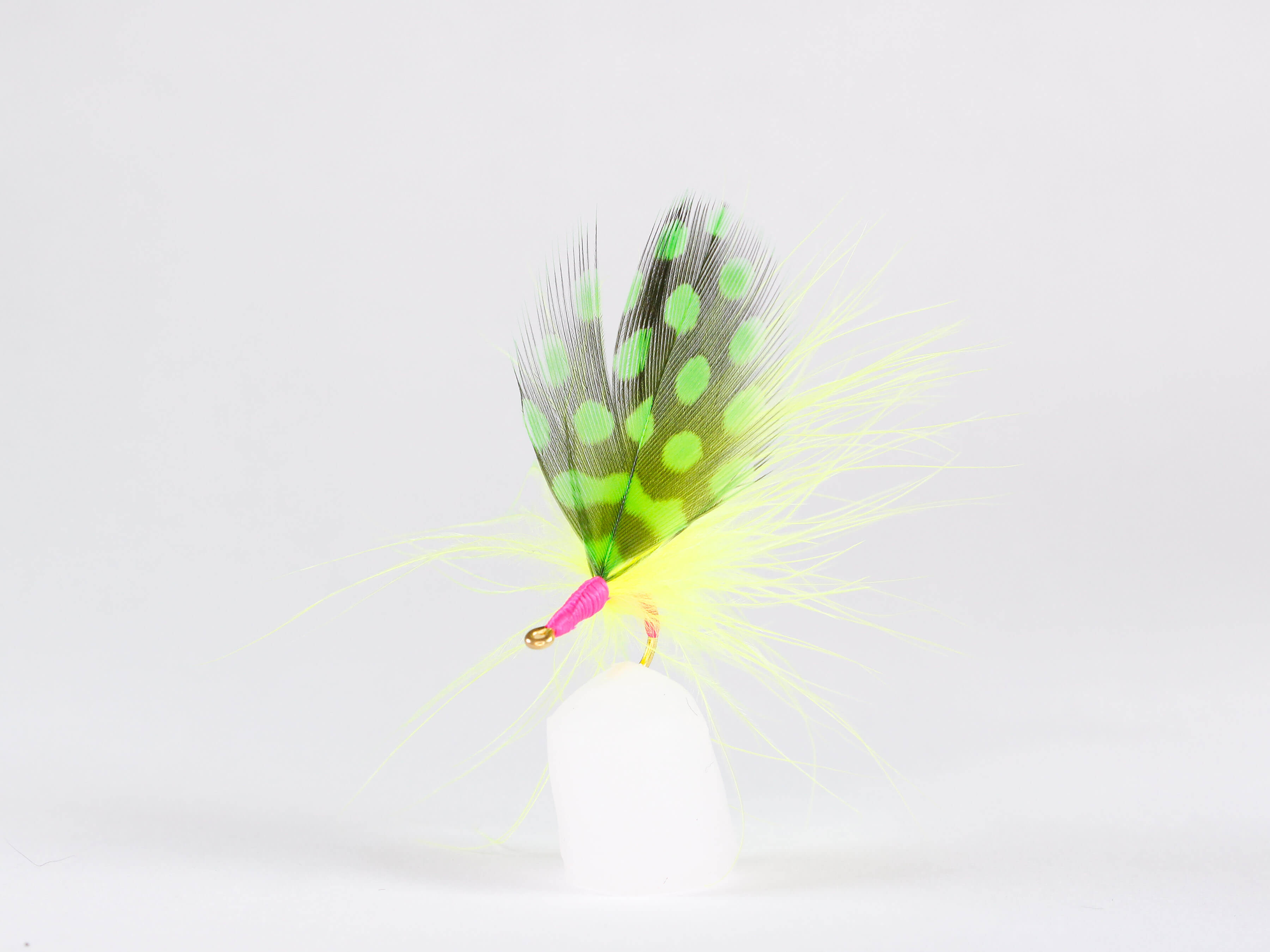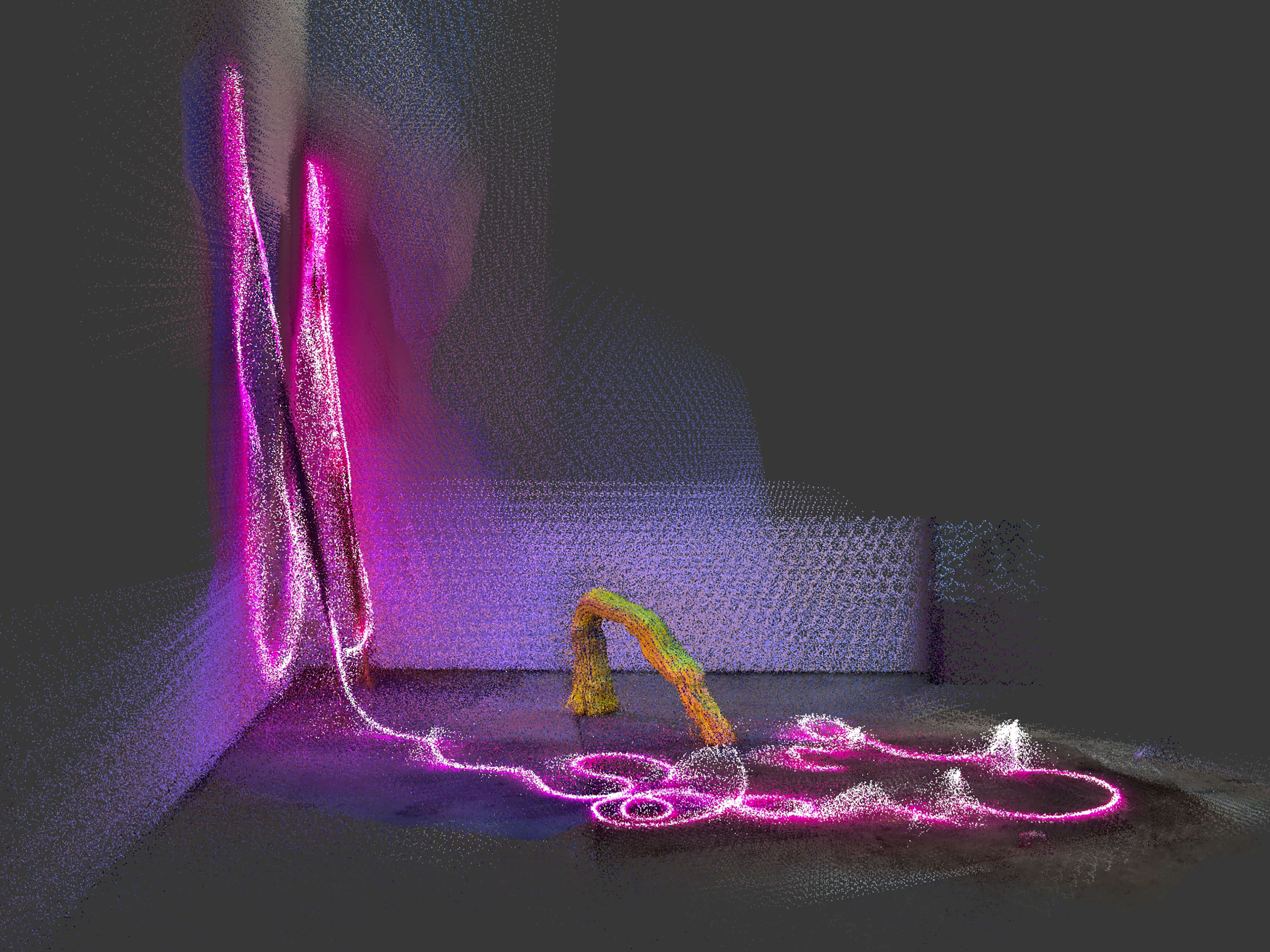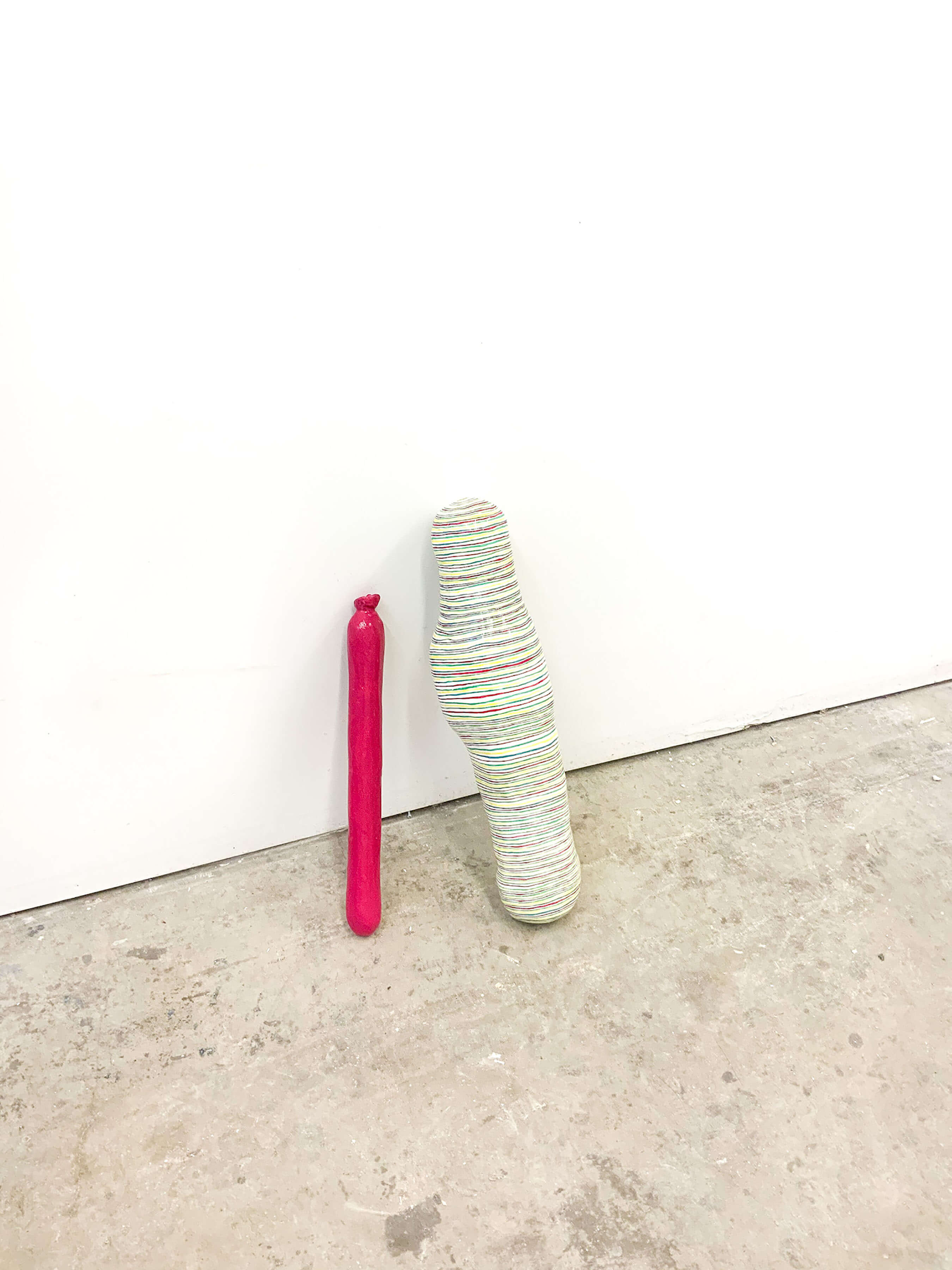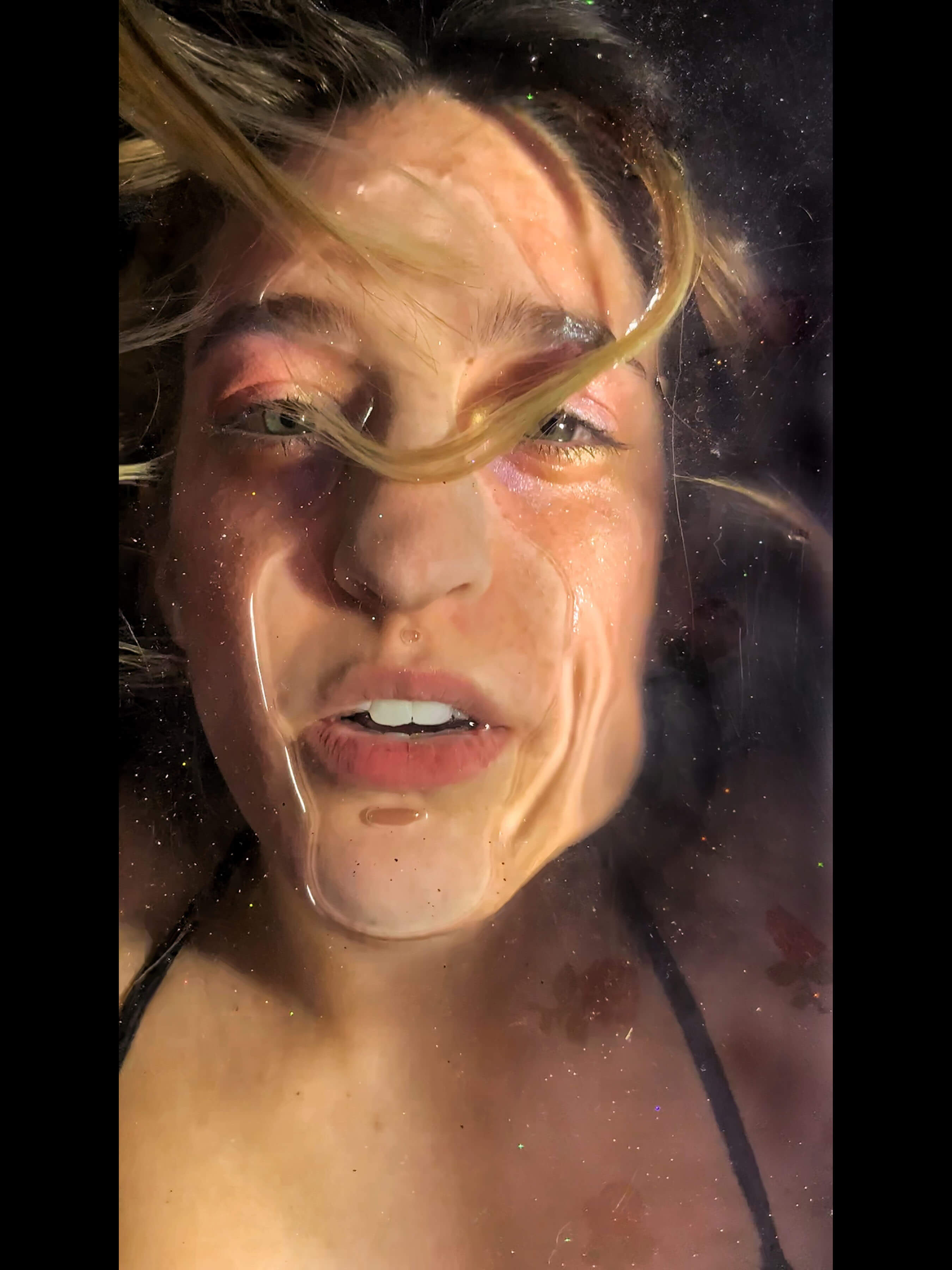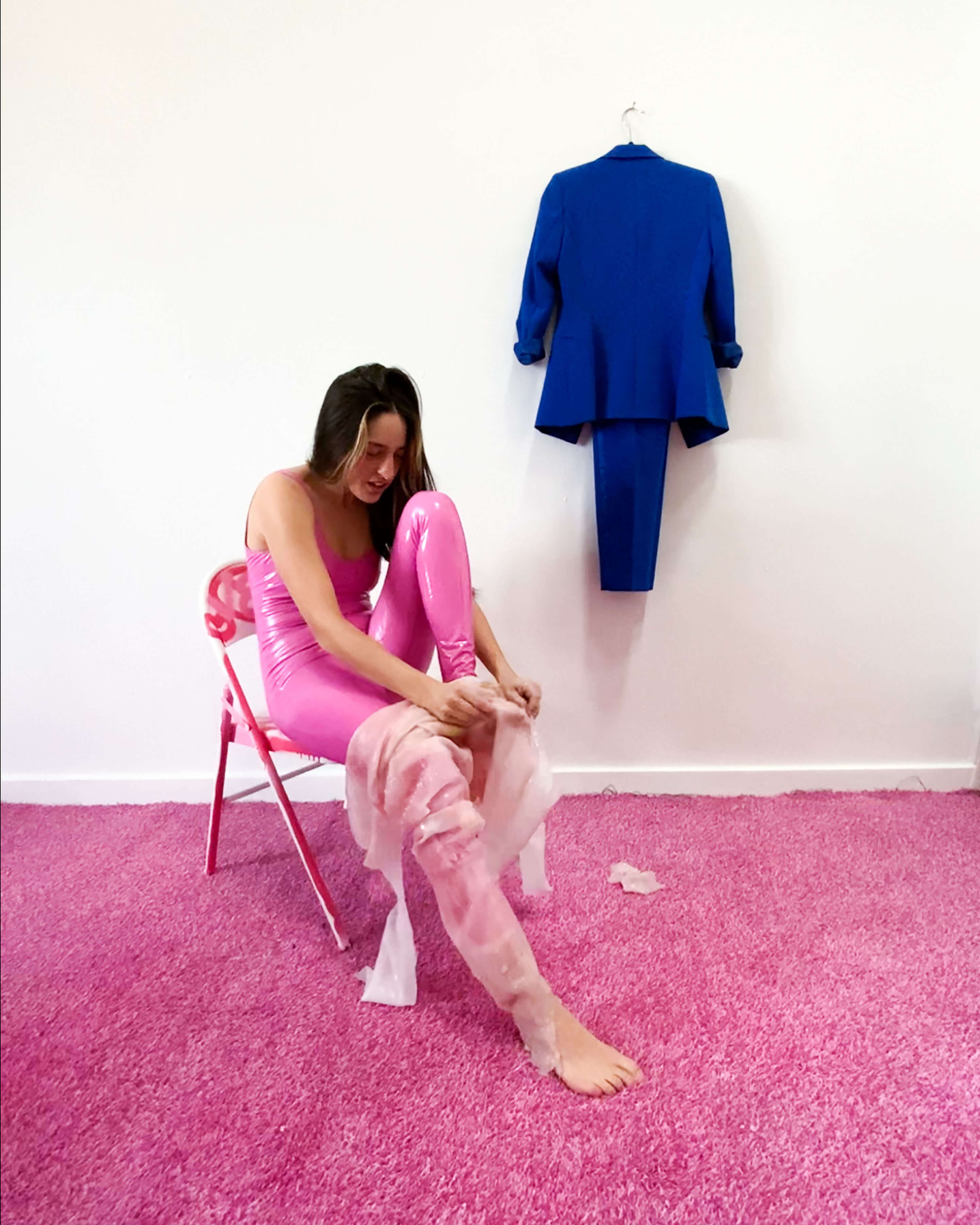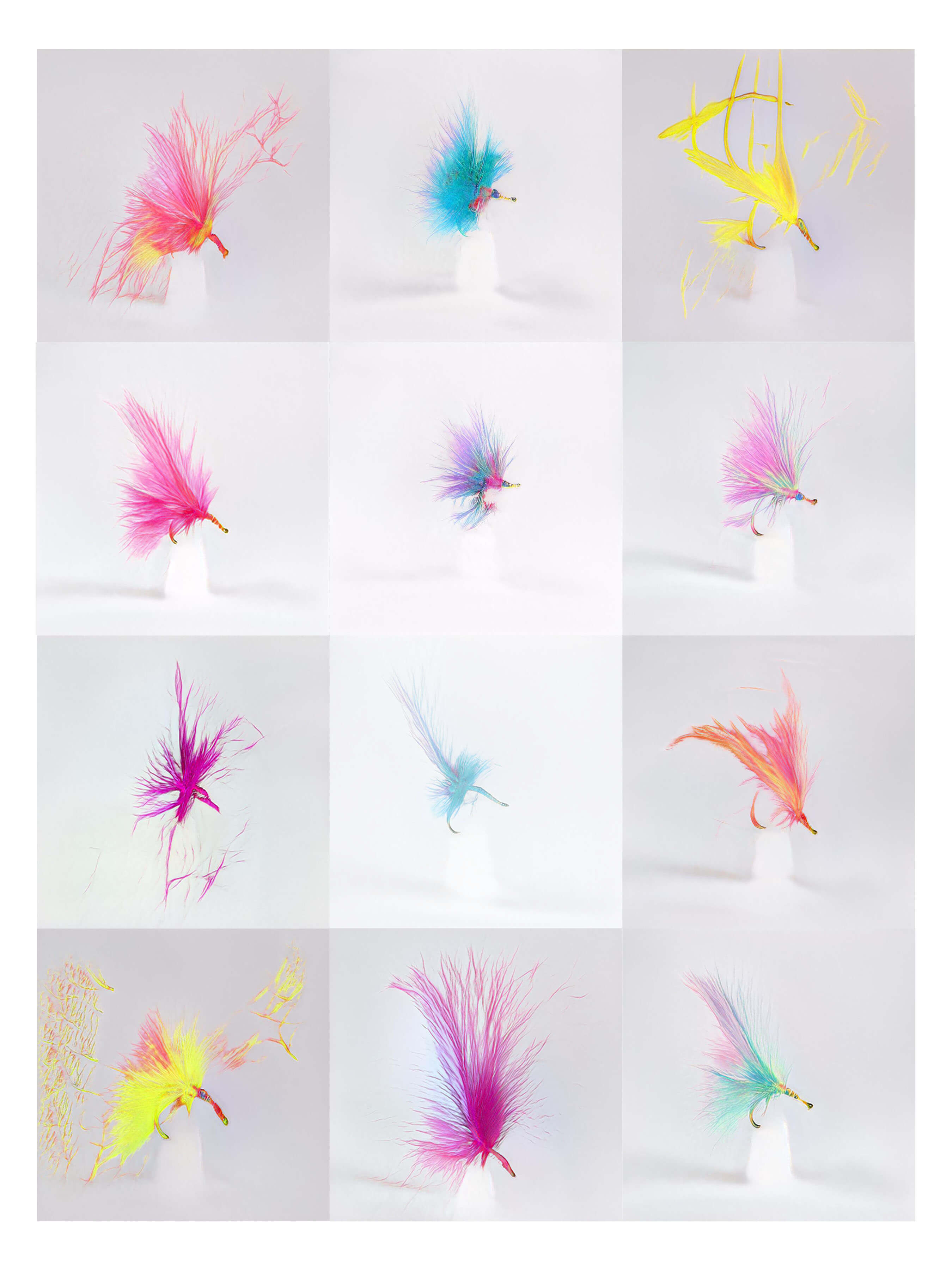Installation and digital artist Tierney Anderson sculpts playful and colorful objects and produces digital works that explore the fragile spaces between technology, self-expression, gender, subjectivity, and ambiguity. Construction of the self and one’s identity exist concurrently within the entanglement of the real and digital worlds and Anderson confronts this phenomenon. Her digital performances shed ambiguity in order to directly consider intersections of feminism and technology as well as her personal relationship to both. The objects and textural forms that she makes often function as props within or as accessories to her digital work.
Anderson utilizes disruption as methodologies in her material and non-material works such as bright pink pigment interrupting a white gallery wall, or a design that disrupts the usability of an object, and she uses both color and function to disconnect the gender signifiers that encompass fly-ties— a male-dominated object used for fly-fishing. Each fish hook is consumed by neon plumage to showcase what she refers to as “drag flies'' in order to bring attention to gender fluidity, feminist ideas, and constructed identity. Anderson’s methods run parallel to a glitch within glitch feminism ideology. Often referred to outside of glitch feminism as a fault or slippage, the glitch introduced by American curator and writer Legacy Russell is considered to be a transformitable moment in which limitations and obstacles surrounding race, gender, sexuality, and identity can be sundered; possibility emerging from error.
Following Russell’s trajectory within cyberfeminism, Anderson created a digital cyborg, or avatar, in order to navigate self-exploration within the space of online artificiality—artifice being the glitch. Anderson’s cyborg is named Tierney and is entirely derivative of images of herself. Tierney is a strategy for exposing the lack of agency Anderson encounters online and intends to use her avatar to emphasize the layering process associated with femininity, comparing the process to coding, performance, and oversimplification. A means of coping with the constant pressure to exist online, Tierney is an explorer of narcissism. Artifice is the possibility for self-exploration, not the error. In a recent untitled video work, Anderson records Tierney performing two separate laborious tasks. In the first, Tierney strenuously puts on a silicone life-cast bodysuit before then stepping into a royal blue pant suit. She sits down and tries to adapt to the weight of her skins, her layers, and her gender codes all the while restless. Accompanying that video is a close-up of Tierney attempting to kiss herself on screen through a clear body of water. In a tragic act of self-reflexivity she nearly drowns.
Tierney’s expeditions with artificiality, which Anderson regards as “sugar-coated riots,” connect to her artistic practice more broadly aiming to locate those ambiguous spaces surrounding the digital world, self-expression, gender, and subjectivity. Her work wants to create space for itself and seeks joy through that space, indulging in curiosity along the way.
Cassidy Schoenfelder, or Poppy
Historian & Place-based Expeditionary Artist
